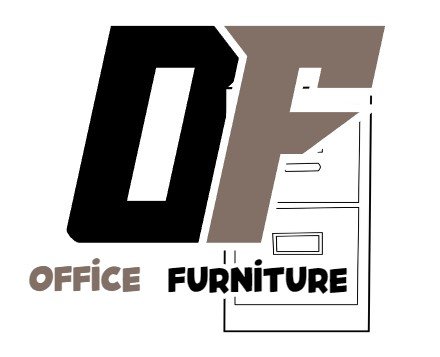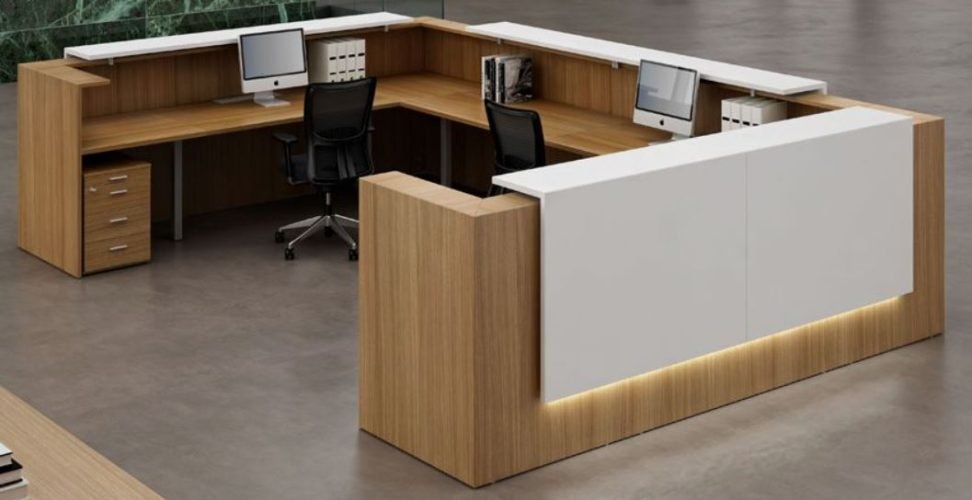In any business environment, the reception area is the first point of contact for clients, guests, and visitors. It is the face of your company—setting the tone for how people perceive your brand, professionalism, and organizational culture. One of the most crucial elements in this space is the Reception Counter Table. This piece of furniture not only provides a functional space for administrative tasks but also plays a key role in defining the aesthetic and vibe of your workplace. Choosing the right reception counter can influence how welcoming and trustworthy your organization appears. A modern, well-designed counter reflects efficiency, organization, and professionalism, while an outdated or mismatched one may create the opposite impression. Companies that invest in quality reception furniture, particularly in high-traffic areas, see a boost in customer satisfaction and employee morale as well.
Functional and Aesthetic Importance of a Reception Counter Table
The Reception Counter Table is more than just a desk; it serves as a control hub for administrative personnel and a focal point for visitors. Its design must strike a balance between form and function. A good counter must offer adequate storage, space for computers or tablets, and a surface that facilitates smooth interactions between staff and guests. In addition, the design should blend well with the overall interior decor. Materials like wood, glass, or laminate provide various textures and styles to complement modern or classic office themes. Moreover, customizable features such as built-in lighting, ergonomic edges, or branding panels can further enhance the counter’s functionality and style. Ultimately, an ergonomic, visually appealing reception table helps streamline workflow, improves organization, and contributes to a seamless visitor experience.
Choosing the Right Design for Your Office Space
Every office has unique spatial constraints and stylistic themes. Whether your workplace follows a minimalist, industrial, contemporary, or corporate aesthetic, the design of your Reception Counter Table should align with the brand’s identity and the architectural layout. For small offices, an L-shaped or curved reception table can optimize space without compromising functionality. In larger reception areas, a U-shaped counter or a modular multi-user design offers greater accessibility and presence. The color palette also plays a role in reinforcing your brand message. Neutral colors like white, gray, or black give a clean and modern look, while bold colors like navy or deep green can convey confidence and uniqueness. Businesses should also consider incorporating company logos or graphics into the design to reinforce branding and corporate image.
Reception Counter Table Materials and Durability Considerations
Durability is a key factor when selecting a Reception Counter Table, especially in high-traffic environments such as hospitals, hotels, schools, or corporate buildings. The materials used should withstand daily wear and tear while maintaining a professional look. Laminate is a popular choice for its affordability and ease of maintenance, while wood offers a timeless, premium finish. Glass adds a touch of sophistication but requires regular cleaning and careful handling. Some modern counters also incorporate metal framing for extra stability and a contemporary look. Depending on the industry, businesses may require special features like waterproof surfaces, anti-microbial finishes, or cable management systems. It’s essential to strike a balance between design, material quality, and budget to get the best return on investment.
Enhancing Reception Efficiency and Visitor Flow
A well-designed Reception Counter Table contributes significantly to operational efficiency. When receptionists have easy access to necessary tools like phones, documents, appointment systems, and storage, they can serve clients faster and more professionally. Some counters include tiered surfaces to separate private workspaces from visitor-facing areas, maintaining both privacy and interaction. Integrating digital check-in screens or kiosks into the counter design can streamline visitor management and reduce waiting times. In busy environments like clinics, banks, or public offices, such enhancements improve client satisfaction and reduce stress for employees. The reception counter becomes not just a workspace but a multifunctional hub that facilitates smooth communication and efficient service delivery.
Modern Trends in Reception Counter Table Designs
As workspaces evolve, so do furniture trends. Today’s Reception Counter Table designs are focusing more on technology integration, sustainability, and flexibility. Touchscreen compatibility, cable routing systems, and charging ports are common additions that cater to tech-savvy work environments. Modular counter systems allow businesses to reconfigure the layout as needed, adapting to growing teams or new workflows. There is also an increasing demand for eco-friendly materials like recycled wood, bamboo, or low-VOC finishes. In coworking spaces or creative studios, reception counters often feature unconventional designs with asymmetrical shapes, bold colors, and artistic detailing to reflect a dynamic and youthful culture. Staying updated with these trends allows businesses to present a forward-thinking image to all visitors.
Reception Counters in Different Industry Settings
The requirements for a Reception Counter Table can vary significantly depending on the industry. In medical settings, hygiene and accessibility are top priorities, so counters are often fitted with sneeze guards, easy-to-clean surfaces, and wheelchair access. In corporate environments, the focus is on professionalism and brand alignment. Hotel reception desks need to offer ample space for check-in/check-out systems, luggage storage, and concierge materials. Educational institutions require reception counters that are sturdy, functional, and welcoming to students and parents. Retail stores, on the other hand, may use reception desks as point-of-sale counters, which require built-in drawers, shelves, and display spaces. Customizing the counter according to industry-specific needs ensures optimal functionality and better user experience.
Investing in Quality Reception Furniture Pays Off
Purchasing a high-quality Reception Counter Table is a strategic investment rather than a mere decorative choice. It reflects a company’s attention to detail, professionalism, and commitment to providing a superior experience to clients and employees alike. Well-built reception counters have long lifespans, which reduces the need for frequent replacements or repairs. They also offer higher resale value and continue to contribute positively to the company’s image over time. When paired with proper lighting, comfortable waiting furniture, and clear signage, a reception counter becomes a powerful tool in establishing brand trust and credibility. A thoughtful investment in reception furniture can yield returns not only in aesthetics but also in efficiency and customer retention.
Conclusion: Make the Right Impression from the Start
In summary, the Reception Counter Table is more than just office furniture—it is an integral part of your business identity. Whether you’re welcoming clients, patients, or potential partners, the reception area shapes their first impression. Choosing the right counter that matches your brand, suits your space, and enhances productivity is essential for long-term success. With various design choices, material options, and customization features available in the market today, businesses have every opportunity to create a welcoming and professional first impression. One smart decision in reception furniture can positively influence customer perception and internal workflow for years to come.

